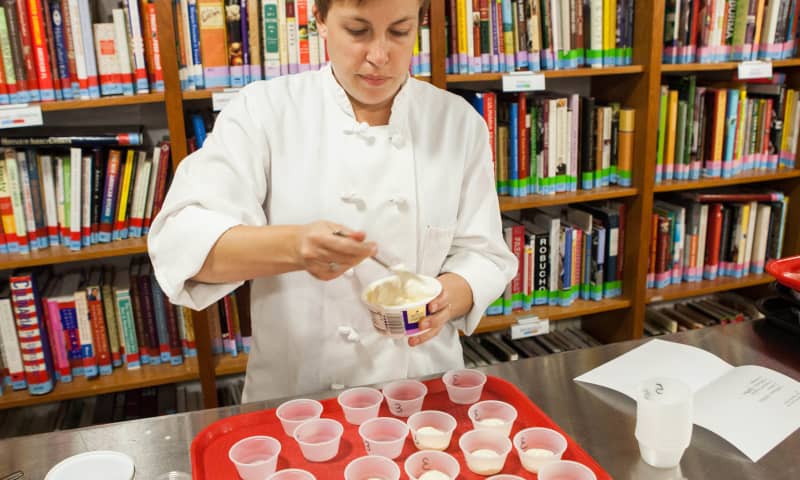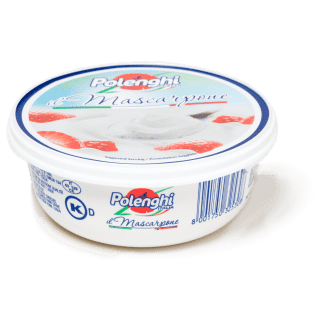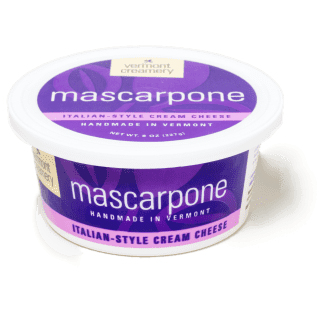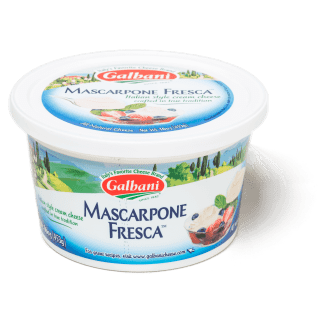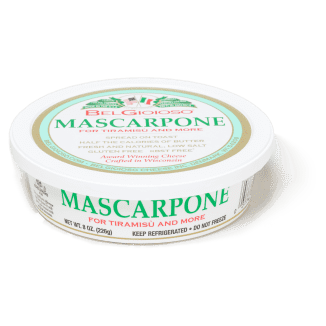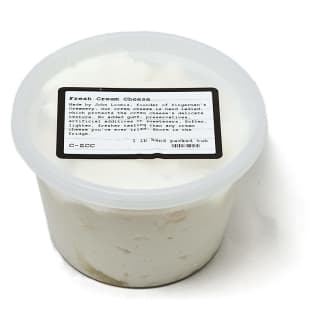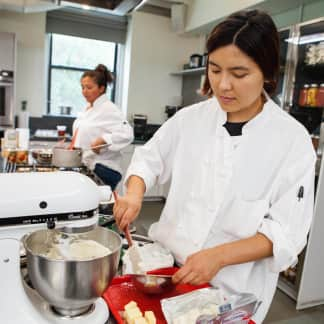Mascarpone is a soft, creamy cow’s-milk cheese from Italy that’s both slightly sweet and slightly tangy. It’s versatile enough to be used in sweet applications (in tiramisù or tarts, dolloped on berries, or drizzled with honey) and savory dishes (stirred into pasta or risotto or served alongside baked or roasted potatoes). It’s an acid-set cheese, which means that the cream and/or milk is coagulated using acids such as citric or acetic acid instead of rennet. It’s then cooked until it reaches a thick and spreadable consistency similar to that of crème fraîche or sour cream. Mascarpone used to be available only in Italian markets and specialty shops, so when we started seeing it in our regular supermarkets, we took notice. We found four nationally available products, including both Italian and domestic versions. A panel of tasters sampled each plain, in tiramisù, and in a fruit tart and rated each on flavor, texture, and overall appeal.
The plain tasting revealed some minor differences in flavor. Some tasters found one sample slightly “sour” and another a bit too “mild,” but those differences were subtle. And when we used the mascarpones in recipes, they were tough to tell apart. Most tasted both “tangy and bright” and “lightly sweet.”
The real differences were in texture. Straight from the container, the cheeses ranged from as loose as yogurt to as firm as brick cream cheese. When we used them to make tiramisù and fruit tart, the textural differences evened out a bit. The firmest mascarpone yielded cream fillings that were “thick and dense,” which translated to desserts that felt rich and decadent. We liked these samples, but the thickest ones also tended to have a slight “graininess” or “chalkiness” that was less appealing. Our favorites were super smooth and, though noticeably less dense, still firm enough to slice neatly.

Ultimately, we liked the cheeses enough to recommend all of them. But what explained the differences we’d noticed? First, we identified the likely source of that firm, stiff texture in our third-place finisher: It contains nonfat milk solids, which are likely added to make a thicker product. Meanwhile, the soft texture of our second-place cheese might be due to its coagulant. It’s the only product in our lineup to use glucono delta lactone, an acid-forming substance that’s slower-acting than the citric acid used in the other cheeses and thus is the likely cause of that cheese’s less-dense texture.

We also realized that our slight flavor preferences were due to the ratio of cream to milk. When milk is skimmed, it loses some of its natural sugar, lactose. Mascarpone made mostly with skim milk (and nonfat milk solids) contained very little natural sugar per serving. Our favorites, which are made with more cream than milk, contained a small amount of natural sugar, just 1 gram for every 2 tablespoons. It was enough to make the cheese taste pleasantly sweet without overwhelming its tangy flavor.

Although we recommend all these products, the sole Italian import emerged as our new winner. Polenghi Mascarpone boasted an especially “luscious” texture and yielded ultrasmooth desserts that sliced neatly but weren’t too thick or heavy. It’s made entirely with cream, no milk, and thus contains a small amount of naturally occurring sugar, so it strikes the perfect balance between “slight sweetness” and the “bright,” tangy flavor our tasters liked best. It’s a mascarpone that we’ll use for tiramisù, fruit tarts, and much more.
- Taste plain
- Taste in a fresh fruit tart
- Taste in tiramisù
- Contains about 1 gram of sugar per serving, indicating that the cream and/or milk used has naturally higher levels of sweet-tasting lactose
- Flavor is both slightly sweet and slightly tangy
- Creamy, smooth texture that holds its shape in desserts but isn’t too thick
